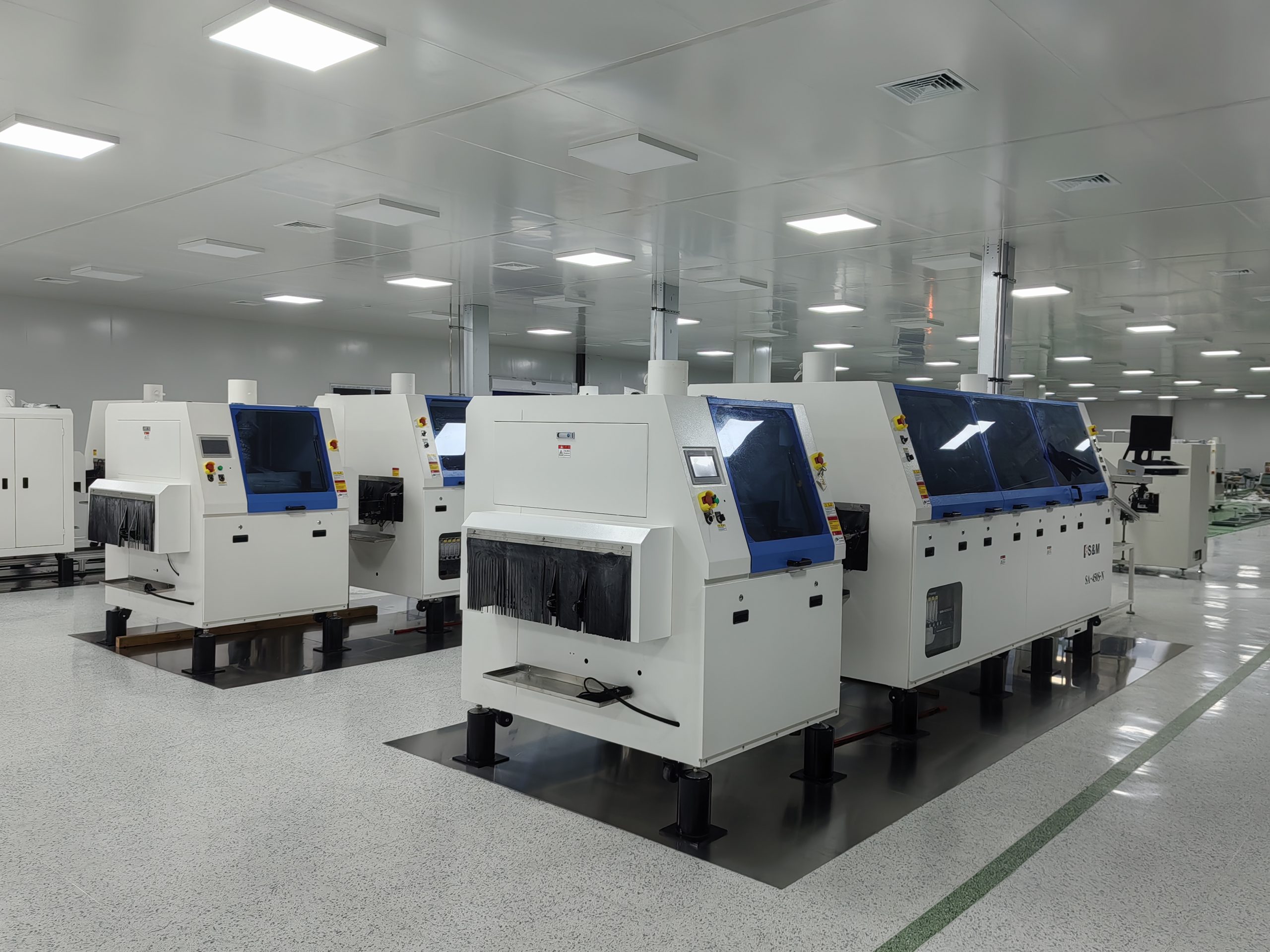
Introduction
In electronics manufacturing, the soldering process directly determines product reliability and quality. Wave soldering, as a traditional and efficient soldering method, remains the core process for soldering through-hole components. However, with increasingly complex product structures, the precision of flux application, solder quantity control, and soldering consistency have become new challenges.
The emergence of selective flux sprayers has brought new possibilities to wave soldering. By intelligently controlling the flux application position and amount, it not only improves solder joint quality but also effectively reduces production costs and wastewater emissions. This article will examine the synergistic benefits of wave soldering and selective flux sprayers, as well as their value in modern SMT production lines.
Overview of Wave Soldering: A Reliable Traditional Process
▍Basic Principles and Application Scenarios
Wave soldering is a process in which molten solder forms a continuous wave, allowing the underside of a PCB and its through-hole component leads to make contact and form solder joints simultaneously.
This method is widely used for through-hole technology (THT) assembly in products such as home appliances, automotive electronics, and power supplies.
With its high throughput and consistent performance, wave soldering remains one of the most reliable processes in large-scale electronic manufacturing.
▍Advantages and Limitations (High Throughput vs. Control Challenges)
The major advantages of wave soldering lie in its high productivity, strong joints, and mature technology. It can solder hundreds of joints at once, greatly improving manufacturing efficiency.
However, challenges remain:
-
Uneven flux coating can cause poor wetting or solder bridging.
-
Thermal imbalance among components may lead to inconsistent solder joints.
-
Conventional flux application methods can cause waste and contamination.
Therefore, improving flux control and precision has become essential for achieving high-quality wave soldering results.
Working Principle and Core Technology of Selective Fluxer
▍Types of Spraying Systems (Ultrasonic / Precision Nozzle)
A selective fluxer applies flux to specific areas on the PCB using either an ultrasonic atomizing system or a precision nozzle.
-
Ultrasonic systems: Provide fine atomization, ideal for small or high-density boards.
-
Precision nozzles: Offer pinpoint accuracy, preventing flux contamination on non-solder areas.
The choice depends on board design, component layout, and production requirements.
▍Impact of Flux Control Accuracy on Soldering Quality
Flux uniformity directly affects wetting performance and solder flow.
Selective fluxers ensure accurate control of spray time, flow rate, and angle, minimizing defects and improving solder joint consistency.
By precisely applying flux only where needed, the system reduces residue, waste, and rework—ensuring stable and repeatable soldering results.
▍Advantages of Automation and Programmable Control
Modern selective fluxing systems feature programmable motion control that automatically adjusts spray paths according to PCB layout.
With vision-assisted alignment and software-based parameter settings, the process becomes fully automated and repeatable, reducing operator dependence and human error.
This results in smarter, more efficient, and more sustainable soldering production.
Synergy Between Wave Soldering and Selective Fluxing
▍Reducing Flux Waste and Solder Bridges
Conventional foam or roller fluxing methods tend to overapply flux, leading to solder bridging or residue.
By precisely targeting flux application, a selective fluxer reduces material waste and minimizes soldering defects—improving both cost efficiency and yield.
▍Improving Consistency and Reliability of Solder Joints
Uniform and controlled flux coverage enhances solder wetting and ensures even solder distribution.
When combined with stable heating control in wave soldering, the result is better joint quality, reduced rework, and improved product appearance.
▍Towards a Greener and More Stable Manufacturing Process
Selective fluxing significantly reduces VOC emissions and cleaning frequency.
This not only supports eco-friendly manufacturing but also extends equipment maintenance intervals—making the entire production line cleaner and more stable.
Application Case: Process Optimization in SMT Production Lines
▍Performance Comparison: Before and After Implementation
At one automotive electronics manufacturer, integrating a selective fluxer before wave soldering improved average yield from 98.2% to 99.6%, while solder bridge defects dropped by over 60%.
Flux consumption was reduced by nearly 30%, translating to substantial cost savings and improved production efficiency.
▍Customer Feedback and Integration Advantages
Customers reported enhanced soldering stability and easier maintenance after system integration.
Through unified control between the fluxer and wave soldering unit, the line achieved seamless operation across fluxing, preheating, and soldering stages, improving takt time and process traceability.
Conclusion: The Future of Smart Soldering
▍Trends Toward Automation, Visualization, and Data Integration
With the rise of Industry 4.0, soldering technology is evolving toward automation, visualization, and data-driven management.
The integration of selective fluxing and wave soldering enables real-time process monitoring, quality tracking, and predictive maintenance, setting a new standard for intelligent manufacturing.
▍Why This Combination Remains a Core Solution in Electronics Manufacturing
By combining the high efficiency and reliability of wave soldering with the precision and environmental advantages of selective fluxing, manufacturers can achieve consistent quality, lower waste, and more sustainable production.
In today’s competitive electronics industry, this synergy remains one of the most effective and future-ready soldering solutions.
